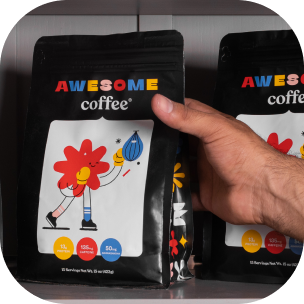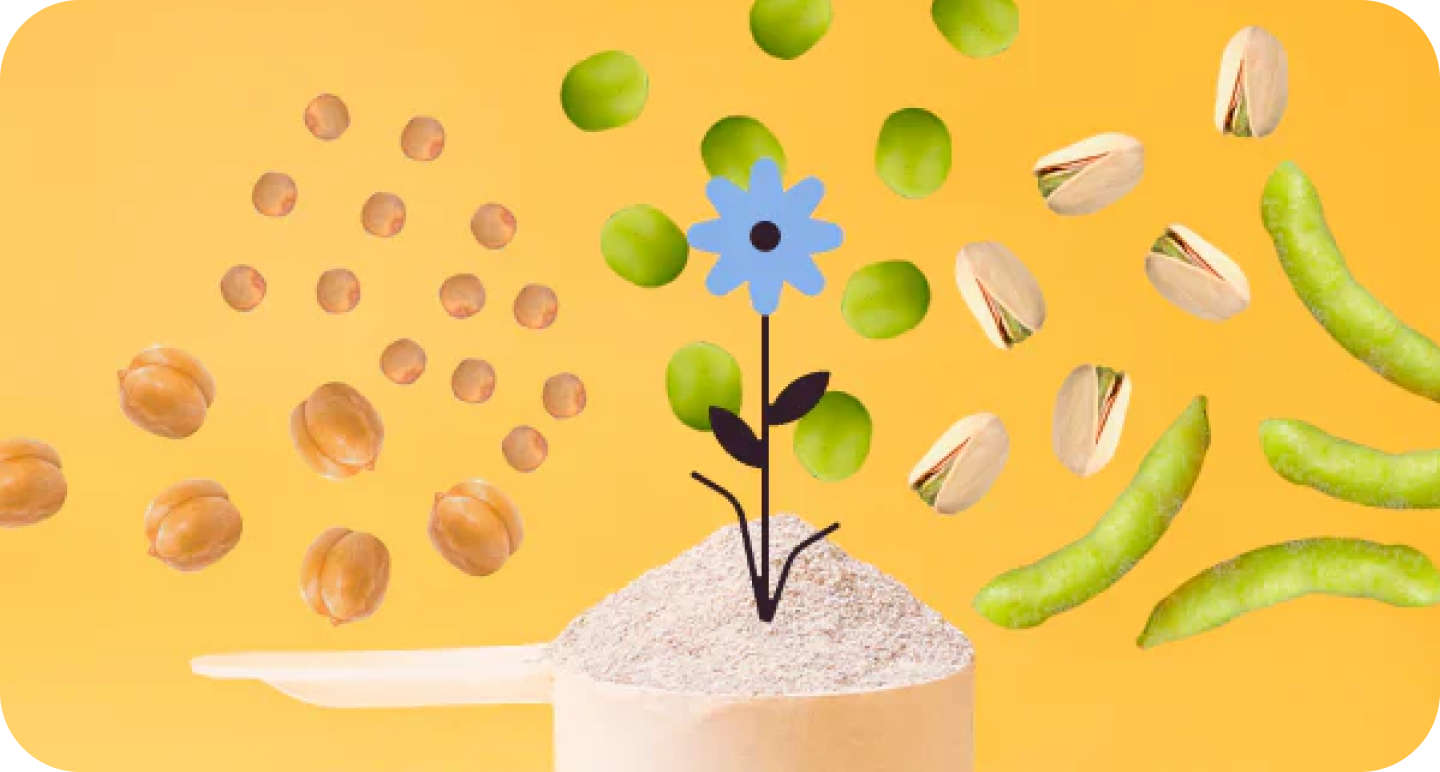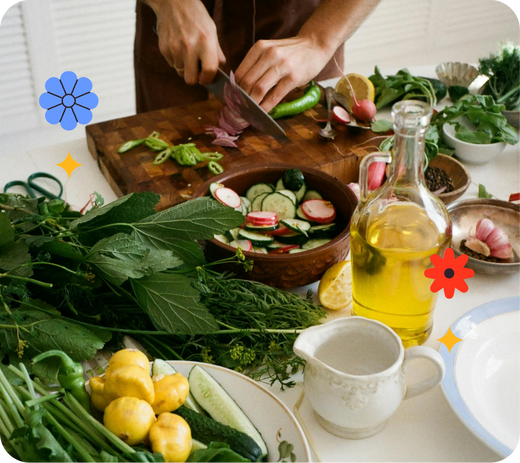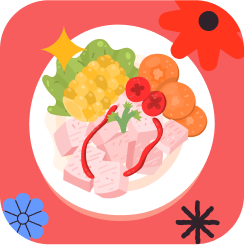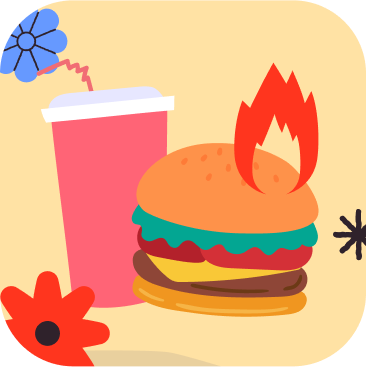Meal prep is a useful strategy for achieving your muscle-building goals. Preparing your meals in advance ensures easy access to foods that support your workouts and recovery.
No matter how many hours you spend in the gym, you won’t get results without the right nutritional support for fueling workouts and building stronger muscles.
When you’re caught between busy schedules, you can get tempted by convenient, unhealthy food options. Staying true to your eating plans can be quite challenging.
With meal prep, your meals are ready when needed, perfectly portioned, and tailored to meet your fitness needs. So read on to learn all you need to know about meal prep for muscle gain.
Planning Your Meals for Muscle Gain
To create effective meal plans that align with your muscle-building goals, you need to :
Be aware of your calorie and macronutrient needs:
To gain muscle mass and bulk up, you need to consume more calories than you burn. You can calculate your daily calorie needs by using an online calculator. You have to input factors such as your age, gender, weight, height, and activity level. For example, if you are:
- Age: 25-year-old male
- Height 5’10”
- Weight: 170 lbs
- Activity level: (moderate exercise about 3 to 4 times a week)
Then, you will need about 2,500 calories a day to maintain your current weight. To build muscle, you need to add about 300 to 500 extra calories to your daily diet. So, you need to aim for 2800 to 3000 calories daily for muscle gains. The general macronutrient breakdown for muscle building is as follows:
- 40% carbs: Carbs give you energy for your workouts.
- 40% protein: Protein is vital for muscle building.
- 20% fats: Fats are important for sustained energy, hormone production, and overall health.
So, if you're eating 3,000 calories a day, 1,200 calories should be from carbs, 1,200 calories from protein, and about 600 calories from fats. While doing the math, keep in mind that 1 gram of protein or carbs has only 4 calories, while a gram of fat has 9 calories.
Choosing ingredients to meet macronutrient goals:
For optimum nutrition, there should be variety and balance in your diet. You can choose high-quality, nutrient-dense foods from the following categories:
- Proteins: Eggs are a complete protein source and they are very easy to prepare. You can get high-quality protein and healthy fats from fish such as salmon or tuna. Beef is a high-protein choice with essential nutrients like iron and vitamin B12. If you are looking for a leaner protein source, you can go for chicken. For plant-based protein, tofu is a great option, as it’s also rich in iron and calcium.
- Complex Carbs: Whole grains such as brown rice, oats, and barley are good choices. Sweet potatoes are high in fiber, vitamins, and minerals. Quinoa has complex carbs and is a complete protein with all essential amino acids.
- Healthy Fats: Avocados are a rich source of monounsaturated fats, fiber, and potassium. Olive oil is another rich source of monounsaturated fats and antioxidants. Coconut oil is high in saturated fats, but this is in the form of medium-chain triglycerides (MCTs) that are known for numerous health benefits. Nuts such as almonds, walnuts, and cashews offer healthy fats, protein, and fiber. Seeds like chia, flax, and pumpkin seeds have protein, omega-3 fatty acids, and fiber.
- Vegetables: Have plenty of colorful vegetables, including broccoli, spinach, bell peppers, and zucchini. These are high in fiber, vitamins, minerals, and antioxidants.
You can mix and match these ingredients to create effective and enjoyable meals that meet your calorie and macronutrient needs.
Meal-Prepping Tips
-
Batch Cooking
You can cook large quantities of chicken, grains, vegetables, etc to save time and ensure you have plenty of food ready for the week.For example, you can roast a whole tray of chicken breasts, cook a pot of brown rice or quinoa, and steam a batch of vegetables such as broccoli. It’s important to store these correctly to prevent food spoilage.
-
Portioning and Storage
You can portion out the food for each meal and store it accordingly. You can store the ingredients separately or in meal boxes. Use containers to portion out meals for the week.For example, one tiffin box or storage container can hold a full lunch/dinner meal of chopped grilled chicken breast, some cooked quinoa, and roasted vegetables.
To keep track of freshness, it's best to label each container with the date. You can store these meals in the refrigerator for about four to five days. You can also freeze them to make them last longer.
-
Reheating and Keeping Meals Fresh
When it's meal time, you can reheat your pre-portioned and prepped meals in the microwave or oven and enjoy them fresh and hot.If you have stored them as prepped ingredients and not in the form of portioned meals, then you have to spend a few minutes portioning and plating them. This offers the advantage of heating different ingredients separately to create a more freshly cooked feel.
For example, you can reheat the grilled chicken in a frying pan. Once warmed up, turn up the heat to maximum for a couple of minutes and crispen both sides of the chicken breast. If you have already chopped the chicken, simply toss the pieces until they become crispy on the outside and soft on the inside. Remove it from the pan and put the chicken on the serving plate. Now toss in the roasted veggies and stir-fry on high heat.
Lastly, warm up the cooked quinoa or brown rice and flavor with some herbs, spices, or nuts of your choice. Remove it from the pan and serve it on your plate with chicken and vegetables. Now your fresh,hot and delicious meal is ready to eat.
When reheating, remember to sprinkle some water (as needed) to prevent the food from drying out.
Meal Prep Ideas/Recipes for Muscle Gain
Breakfast Options
Here are some quick and easy ideas for busy mornings.
-
Protein Coffee: Kickstart your day with a proffee. Blend coffee powder with a scoop of protein powder and a banana for a quick and energizing breakfast.
You can turn this into a meal replacement smoothie by adding a handful of spinach, chia, or flax seeds, and some nuts to ramp up the calories and nutrient density. Add any milk of your choice, such as soy milk, almond milk, coconut milk, or cow’s milk.
For meal prep, you can put all the dry ingredients in a ziplock bag and store them in the fridge. In the morning, just toss all the ingredients into the blender and whip up your drink in a jiffy.
- Egg Muffins: Beat 2 eggs in a bowl. Add some vegetables, such as chopped carrots, onions, mushrooms, etc. Flavor with salt, pepper, and herbs of your choice. Pour into muffin trays and keep in the fridge overnight. Next morning, grate some cheese on top and bake in a muffin tin.
-
Protein Pancakes: Use protein powder, oats, eggs, and milk to make pancakes. Top it with berries and a drizzle of honey. Enjoy!
You can make the batter in advance and store it in the fridge for 2-3 days.
- Overnight Oats: Mix rolled oats with Greek yogurt, almond milk, and a scoop of protein powder. Add chia seeds, flax seeds, some nuts, and a handful of berries. You can vary these additions according to your preference. Mix well and store in the fridge overnight. At breakfast time, give it a quick stir, drizzle some honey, top with some fresh fruit, and enjoy your high-protein breakfast.
- High-protein French Toast: Make a mixture of eggs, milk, salt, a pinch of cinnamon, and a scoop of protein powder. Keep them refrigerated overnight. The next morning, dip whole-grain bread slices in this mixture and cook them on a griddle until golden brown on both sides.Top with fresh berries and a drizzle of maple syrup.
Lunch and Dinner Recipes
- Beef Stir-fry with Brown Rice: Cut the meat into strips. Add some water and salt to the beef, and cook until soft. Sauté the beef strips along with chopped green chilies, bell peppers, and onions. Flavor it with salt, pepper, and soy sauce. Serve over cooked brown rice. Freeze it and reheat when required. Garnish with roasted cashews and chopped cilantro while serving.
-
Grilled chicken with Quinoa and Roasted Vegetables: Marinate chicken breasts with salt, pepper, olive oil, lemon juice, garlic, and other spices of your choice and grill them. When cooking quinoa, remember to fluff the cooked quinoa before allowing it to cool down. This prevents clumping. Keep both chicken and quinoa freezed. You can choose to roast vegetables such as bell peppers, zucchini, and carrots before serving to keep them crunchier.
Tip: Also, avoid overcooking veggies to maintain the crunch.
- Kung Pao Chicken: The main ingredients are diced chicken breast, peanuts, bell peppers, and zucchini. These are stir-fried in a spicy sauce made from soy sauce, hoisin sauce, and chili paste. They can be easily frozen and reheated later. Serve the chicken with steamed rice for a protein-packed, flavorful dish.
- Chicken Tikka Masala: Make a marinade with yogurt, salt, chili powder, garlic, ginger, turmeric, cumin, and garam masala. Marinate the chicken pieces for 30 minutes to an hour. This should be refrigerated for 8 hours or overnight. Grill the chicken until done and freeze. When ready to serve, simmer the grilled chicken pieces in a rich tomato-based sauce. Add fresh cream. Enjoy this with basmati rice or whole wheat naan bread.
- Chicken Parmesan: Marinate chicken breasts with salt, pepper, and lemon juice. Dip in the egg and then coat with a mixture of whole wheat breadcrumbs and parmesan cheese. Bake until golden brown. Freeze it. When ready to serve, top with marinara sauce and mozzarella cheese. Serve with whole wheat spaghetti and a salad of your choice.
Common Challenges and Solutions while Meal Prepping
- Limited cooking time: If you don’t have much time to cook, then look for recipes with minimal preparation and cooking time. There are many quick meals you can try out, such as stir-fries or overnight oats. In one-pot or one-sheet dinner recipes, all the ingredients are tossed, cooked or roasted in one go. This allows you to prepare nutritious meals without spending hours in the kitchen. There is less cleaning up as well.
- Maintaining variety throughout the week: Experiment with different ingredients and recipes to maintain variety in your meals. If you have any leftover ingredients, try making a different dish with them. For example, make a chicken salad or a chicken stir-fry using leftover grilled chicken. With leftover rice, you can make some Chinese fried rice or an Indian biryani.
- Keeping meals from getting boring: Are you bored of eating the same foods? To prevent your meals from becoming monotonous, you should add more variety and flavor. Experimenting with different spices, herbs, and sauces as well as incorporating new seasonings can make a big difference in taste.
Conclusion

Meal prep is an effective strategy to meet your nutritional needs for muscle gain. Prepping your meals simplifies your routine and enables you to stay on track with your muscle-building diet plan. It offers convenience and helps control portion sizes.
You can plan meals ahead of time and eliminate confusion. Do batch cooking and use creative recipes to make your meals quick, easy, and interesting. To keep your meals enjoyable and sustainable, you should personalize your meal prep plan to suit your tastes and preferences.
Bonus Section: Snacks and Supplements
Snacks
Have these snacks between your main meals to increase your total calorie and protein intake.
- Instant protein coffee: Mix a scoop of Awesome Coffee with 8 to 10 ounces of milk or water and shake! Your high-protein proffee is ready!
- Greek yogurt with berries and nuts is a high-protein snack with healthy fats and probiotics.
- Protein bars are convenient and portable. But do make sure to check the label and avoid the ones with added sugars.
Supplements
Supplements such as whey protein, BCAAs, and creatine are popular among bodybuilders for boosting muscle gains. Unless you are a professional bodybuilder or athlete, you can get all the nutrients you need from a healthy and balanced diet. In fact, just one scoop of our protein coffee provides 13 g of protein. You can use it as a pre-workout or even a post-workout drink to meet your protein requirement.
